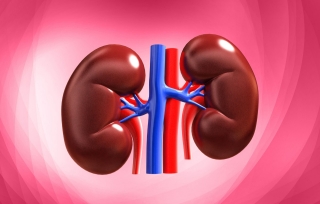Diethylene glycol (DEG) is a clear, colorless, practically odorless, viscous, hygroscopic liquid with a sweetish taste.1


Source of image. Source of image.
Source/Uses: DEG is used as a component of multiple different products including antifreeze preparations, cosmetics, lubricants, brake fluids, wallpaper strippers, heating/cooling fuel and as a plasticizer.2
Toxicokinetic:
DEG is rapidly absorbed and distributed within the body following ingestion. Metabolism occurs principally in the liver and both the parent and the metabolite, 2-hydroxyethoxyacetic acid (HEAA), are renally eliminated rapidly.1

Metabolism of diethylene glycol in rats and humans. Source of image.
Carcinogenicity:
There is no evidence of a direct carcinogenic effect of diethylene glycol.
Mechanism of action:
Although the mechanism of toxicity is not clearly understood, research suggests that the DEG metabolite, HEAA, is the major contributor to renal and neurological toxicities.1
Target organ(s):
The target organs for acute DEG toxicity are the kidney, liver, and nervous system.3


Source of image. Source of image
Signs and symptoms of toxicity:
There are three phases of DEG poisoning.
- Phase one is characterized by GI symptoms, inebriation and the development of a metabolic acidosis.
- Phase two is characterized by renal failure.
- Patients develop a variety of neurologic complications in phase three. The mortality rate remains high despite aggressive therapy.1
Treatment:
Initial treatment consists of appropriate airway management and attention to acid-base abnormalities. Prompt use of fomepizole or ethanol is important in preventing the formation of the toxic metabolite HEAA; hemodialysis can also be critical, and assisted ventilation may be required.1
Biomarkers:
A case-control study in 2006 to characterize DEG and its metabolites in stored serum, urine, and cerebrospinal fluid (CSF) specimens concluded Diglycolic acid is associated with human DEG poisoning and may be a biomarker for poisoning.4
Historical or unique exposures:
The first mass poisoning was the sulfanilamide-Massengil disaster in the United States in 1937. There have subsequently been a dozen additional epidemics involving numerous cases, and many deaths.2
The table below is the summary of major diethylene glycol mass poisoning incidences.
| Outbreak Year | Outbreak Country | Implicated Medication | Route of Exposure | Reference |
| 1937 | USA | Elixir of Sulfanilamide | oral | Calvery and Klumpp (1939) |
| 1969 | South Africa | Sedative | oral | Bowie and McKenzie (1972) |
| 1986 | India | Glycerin | unknown | Padya (1988) |
| 1990 | Nigeria | Acetaminophen | oral | Okuonghae et al. (1992) |
| 1990 | Bangladesh | Acetaminophen | oral | Hanif et al. (1995) |
| 1992 | Argentina | Propolis syrup | oral | Ferarri and Giannuzzi (2005) |
| 1995 | Haiti | Acetaminophen | oral | O’Brien et al. (1998) |
| 1998 | India | Cough expectorant | oral | Singh et al. (2001) |
| 1998 | India | Acetaminophen | oral | Hari et al. (2006) |
| 2006 | Panama | Cough syrup | oral | Rentz et al. (2008) |
| 2008 | Nigeria | Analgesic | oral | Centers for Disease Control and Prevention. (2009) |
References:
- Schep LJ, Slaughter RJ, Temple WA, Beasley DM. Diethylene glycol poisoning. Clin Toxicol (Phila). 2009 Jul;47(6):525-35. doi: 10.1080/15563650903086444. Erratum in: Clin Toxicol (Phila). 2009 Sep;47(8):840. PMID: 19586352.
- Diethylene Glycol Poisoning · California Poison Control System (CPCS). California Poison Control System (CPCS). (2018, September 20). https://calpoison.org/news/diethylene-glycol-poisoning.
- Besenhofer, L. M., Adegboyega, P. A., Bartels, M., Filary, M. J., Perala, A. W., McLaren, M. C., & McMartin, K. E. (2010). Inhibition of Metabolism of Diethylene Glycol Prevents Target Organ Toxicity in Rats. Toxicological Sciences, 117(1), 25–35. https://doi.org/10.1093/toxsci/kfq167
- Schier JG, Hunt DR, Perala A, McMartin KE, Bartels MJ, Lewis LS, McGeehin MA, Flanders WD. Characterizing concentrations of diethylene glycol and suspected metabolites in human serum, urine, and cerebrospinal fluid samples from the Panama DEG mass poisoning. Clin Toxicol (Phila). 2013 Dec;51(10):923-9. doi: 10.3109/15563650.2013.850504. Epub 2013 Nov 25. PMID: 24266434; PMCID: PMC4547770.